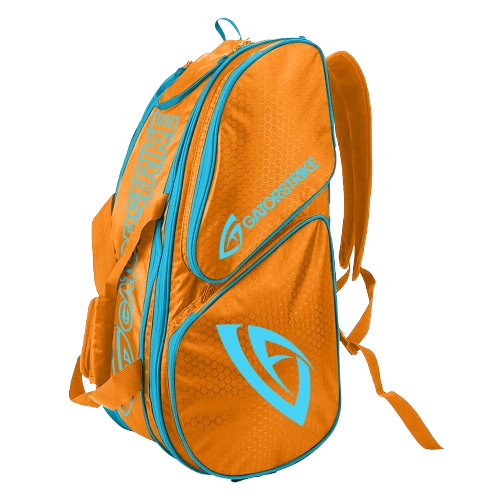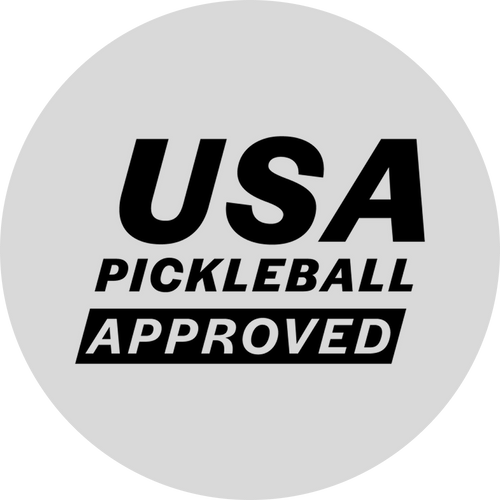
The Importance of Paddle Grip and Handling
Share
In the world of pickleball, the paddle is an extension of your hand, and how you grip and handle it can determine your success on the court. Just as a painter controls a brush with precision, a player must command their paddle with finesse. It’s not just about holding the paddle—it's about how you hold it.
Grip Styles: Finding What Fits
There are several grip styles in pickleball, but three reign supreme: Eastern, Continental, and Western grips. Each offers a unique angle of control and power:
-
Eastern Grip: This grip feels natural for many players. It’s like shaking hands with your paddle. You’ll find a balance between spin, power, and control, making it ideal for beginners. With this grip, the paddle’s face is perpendicular to the ground, allowing for versatile shots.
-
Continental Grip: Often referred to as the "hammer grip," this one is favored by more seasoned players. It’s perfect for dinks, volleys, and even spin shots. With your hand placed more over the paddle, you gain control in every angle of the game. It’s the Swiss Army knife of grips—versatile, sturdy, and great for quick reaction shots.
-
Western Grip: Want to hit with heavy topspin? This is your grip. However, it’s more difficult for beginners as it demands more wrist movement and control. The Western grip involves placing your hand under the paddle, allowing you to whip through shots with heightened spin.
Pro Tip: Experiment with all three grips to find which one complements your playstyle. Comfort is key, but flexibility in switching grips mid-game gives you an extra edge.
The Right Grip Pressure: The Magic Balance
It’s not enough to simply know which grip to use; how tightly you grip the paddle is equally important. Too tight, and you restrict your ability to generate spin and finesse. Too loose, and you risk losing control over power shots or misdirecting your placement.
A general rule of thumb is to hold the paddle as if you're holding a delicate bird—you want to keep it secure but not crushed. A relaxed grip gives you more wrist flexibility, which is essential for spin and precise ball placement. Adjust your grip pressure based on your shot: loosen up for a dink, firm up for a power drive.
Handling the Paddle with Precision
How you handle your paddle goes beyond just gripping it—it involves how you move with it. The paddle should feel like an extension of your arm, always ready for the next shot.
-
Neutral Paddle Position: Keep the paddle up and ready in front of your body, with the face angled slightly upwards. This is your defensive stance, allowing you to react quickly whether the ball comes low or high.
-
Wrist Action: Avoid too much wrist flicking in powerful shots. The control comes from a combination of arm movement and stable paddle positioning, particularly in volleys and groundstrokes. However, for spin shots and dinks, slight wrist action can work wonders, especially when controlling the angle of the paddle face.
-
Follow Through: Each shot demands a clean follow-through. After hitting the ball, let your paddle follow the natural arc of the motion. Stopping abruptly compromises accuracy and spin potential. Whether you’re serving or smashing, your paddle should flow like water after contact, not stop abruptly.
The Role of Paddle Technology
The material and texture of your paddle also affect grip and handling. Modern pickleball paddles come with various materials like graphite, composite, or polymer cores that impact weight, surface roughness, and overall handling.
A heavier paddle generally gives you more power but less control, while a lighter paddle offers better maneuverability but sacrifices some strength. For players who rely on spins, textured paddles grip the ball better, allowing for sharper spins and improved control over placement.
Common Mistakes in Grip and Handling
-
Death Grip: Gripping the paddle too tightly is one of the most common errors. It leads to muscle fatigue, limits wrist flexibility, and reduces shot accuracy. Relax your grip and stay loose to maintain fluidity in your play.
-
Paddle Position Neglect: Holding the paddle too low or too far from your body is another misstep. Keeping it ready in front of your chest gives you quick access to both backhand and forehand shots, ensuring no reaction time is lost.
-
Overusing Wrist Action: While wrist action can add finesse to certain shots, overuse can lead to inconsistency and missed opportunities. Master the balance of full-arm strokes with subtle wrist movements for more controlled gameplay.
Conclusion
Understanding your paddle grip and handling is the foundation of pickleball success. It’s not just about how hard you can hit the ball—it’s about how precisely you can place it, how much spin you can apply, and how quickly you can react. By mastering your grip, understanding paddle technology, and honing your handling technique, you’ll find yourself not only keeping up with the game but controlling it with confidence and finesse.

















